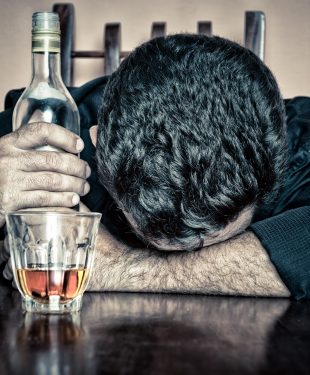Today we’re exploring the differences between drug and alcohol addiction. Addiction is a major public health issue worldwide. It affects people of all ages and backgrounds and can significantly disrupt an individual’s life. Unfortunately, in many cases, individuals struggling with addiction may not realize that they have a problem until it has already progressed to an advanced stage. However, understanding the differences between drug and alcohol addiction can help identify problematic behavior at its earliest stages and ensure that those affected can receive the most appropriate treatment for their condition.
Therefore, this article will explore the key distinctions between drug and alcohol addiction to better understand how they develop and what strategies are available for managing them.
Definition
Drug addiction is defined as a chronic disease characterized by compulsive drug use despite negative consequences. It is often associated with changes in the brain’s reward pathways, leading to physical and psychological dependence on a substance.
On the other hand, alcohol addiction is characterized by prolonged consumption of alcohol despite negative consequences. In addition, it can cause physical withdrawal symptoms such as nausea, shakiness, and anxiety when abstaining from consumption.
Causes Of Addiction:
Drug addiction and alcohol addiction have different causes. Drug use is often attributed to various emotional, mental, and social factors, such as depression, anxiety, peer pressure, abuse, or trauma in childhood. On the other hand, alcohol addiction can be linked to genetics or environmental factors such as a family history of alcoholism or poverty.
Signs and Symptoms:
The signs and symptoms of drug and alcohol addiction can vary greatly depending on the substance involved; however, there are some common indicators that may indicate a problem.
These include an increased tolerance for the substance over time; difficulty controlling consumption; withdrawal symptoms when abstaining from use; changes in behavior or social relationships related to substance use; neglecting responsibilities due to excessive drinking or drug use; and relationships with people who are also addicted to drugs or alcohol.
 Treatment options for drug and alcohol addiction
Treatment options for drug and alcohol addiction
1) Cognitive-behavioral therapy (CBT):
Cognitive-behavioral therapy (CBT) is an evidence-based form of psychotherapy that seeks to identify and modify unhealthy thinking patterns and behavior in order to improve mental health. CBT is often used to treat a wide range of psychological issues, including substance abuse, depression, anxiety, phobias, and obsessive-compulsive disorder.
The core components of CBT involve challenging distorted beliefs, teaching problem-solving techniques, and building coping skills. It also emphasizes the establishment of healthy thoughts and behaviors as a way to reduce cravings for drugs or alcohol. Research suggests that CBT can be effective in treating alcoholism, opioid addiction, and other forms of substance abuse.
2) Medication-assisted treatment (MAT):
Medication-assisted treatment (MAT) is an evidence-based approach to addiction treatment that combines medication with counseling and behavioral therapies. With MAT, medication is used to reduce cravings and withdrawal symptoms associated with drug or alcohol use disorder in order to promote abstinence. Common medications used for MAT include naltrexone, buprenorphine, and acamprosate.
Naltrexone is an opioid antagonist that blocks the body’s opioid receptors and helps reduce craving and relapse rates. Buprenorphine is a partial agonist that activates opioid receptors but at a low level compared to full agonists like heroin or oxycodone, thus reducing the risk of abuse while providing relief from cravings. Acamprosate helps reduce anxiety related to withdrawal by restoring the balance of neurochemicals such as glutamate and gamma-aminobutyric acid (GABA). It has been found to be particularly effective in treating alcohol use disorder.
MAT can provide individuals with a comprehensive approach to their recovery, combining medication with individualized counseling sessions and lifestyle modifications aimed at improving mental health and reducing future risk of relapse. Research suggests that MAT can be more effective than non-medication treatments in aiding long-term recovery from substance use disorder and reducing levels of substance use, criminal activity, and homelessness among those affected.
Drug and alcohol addiction can have serious consequences on the lives of affected individuals, as well as their family members and friends. However, various treatments are available to help those with addiction manage their condition and promote recovery. Evidence-based approaches such as cognitive-behavioral therapy and medication-assisted treatment can be highly effective in helping individuals gain control over their substance use disorder and improve their quality of life.
It is important for those who are struggling with drug or alcohol abuse to seek professional help as soon as possible in order to get the support they need. With proper medical care and psychosocial interventions, those affected by addiction can learn the skills necessary to reach sustained sobriety and enjoy a healthier, happier life.
Read more lifestyle articles at ClichéMag.com
Images provided by Flickr, Unsplash, Pexels, Pixabay & Creative Commons


